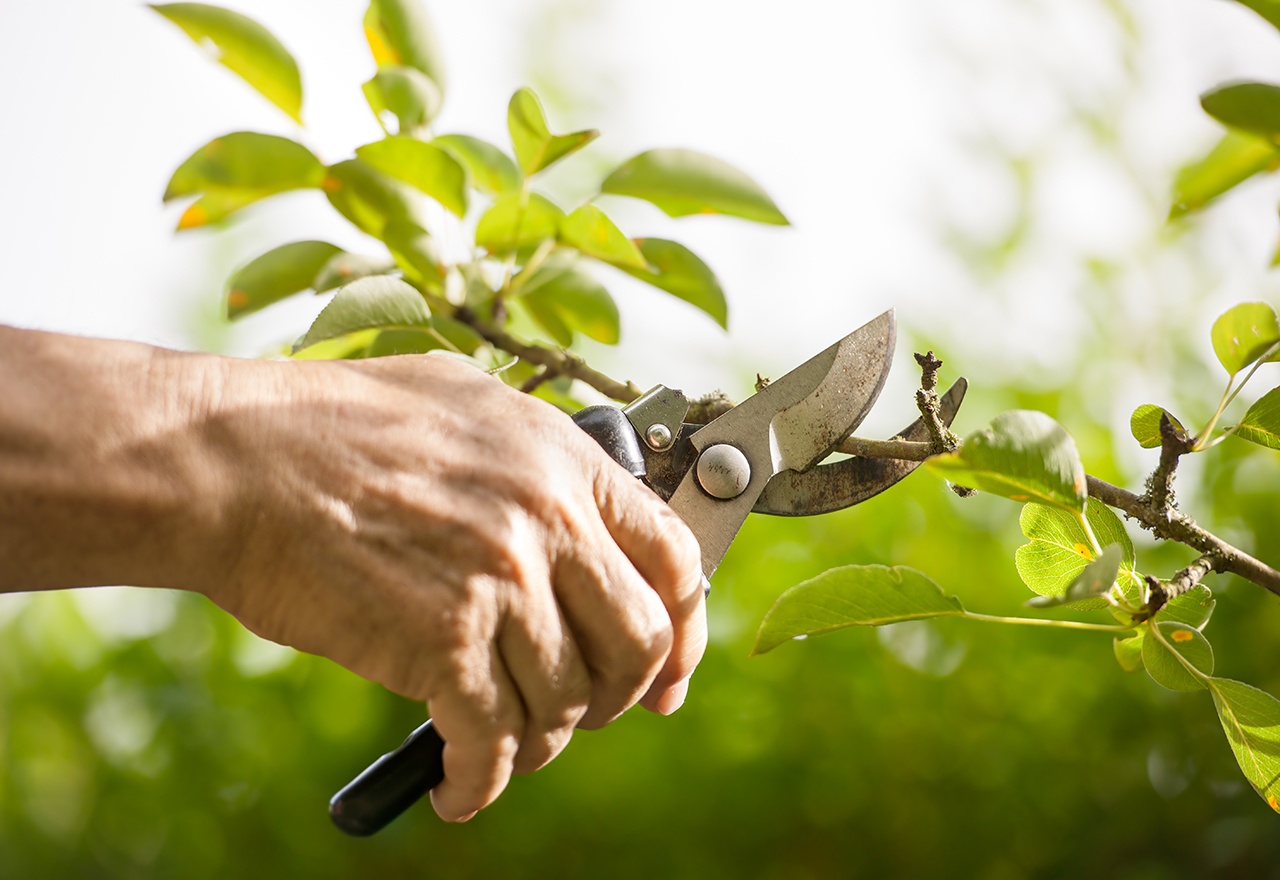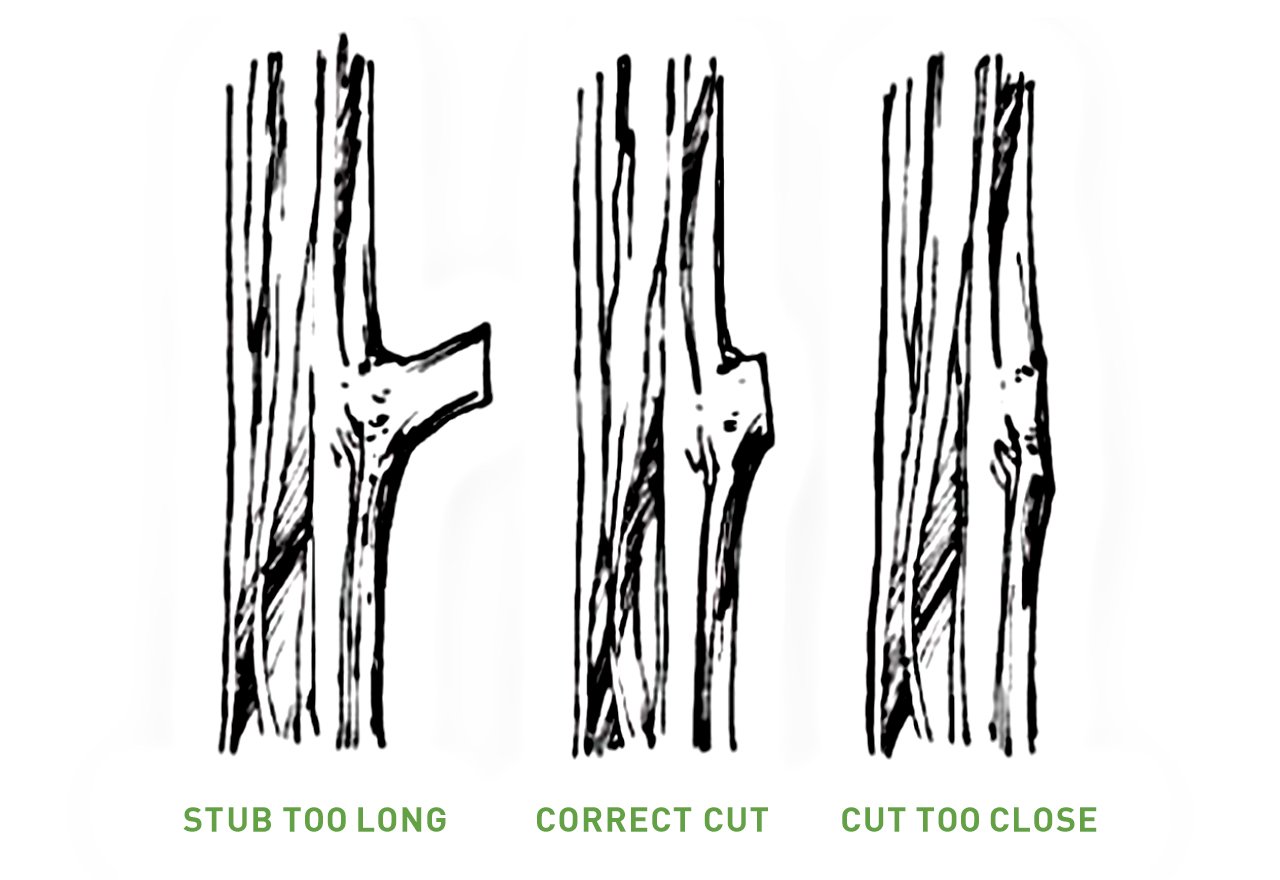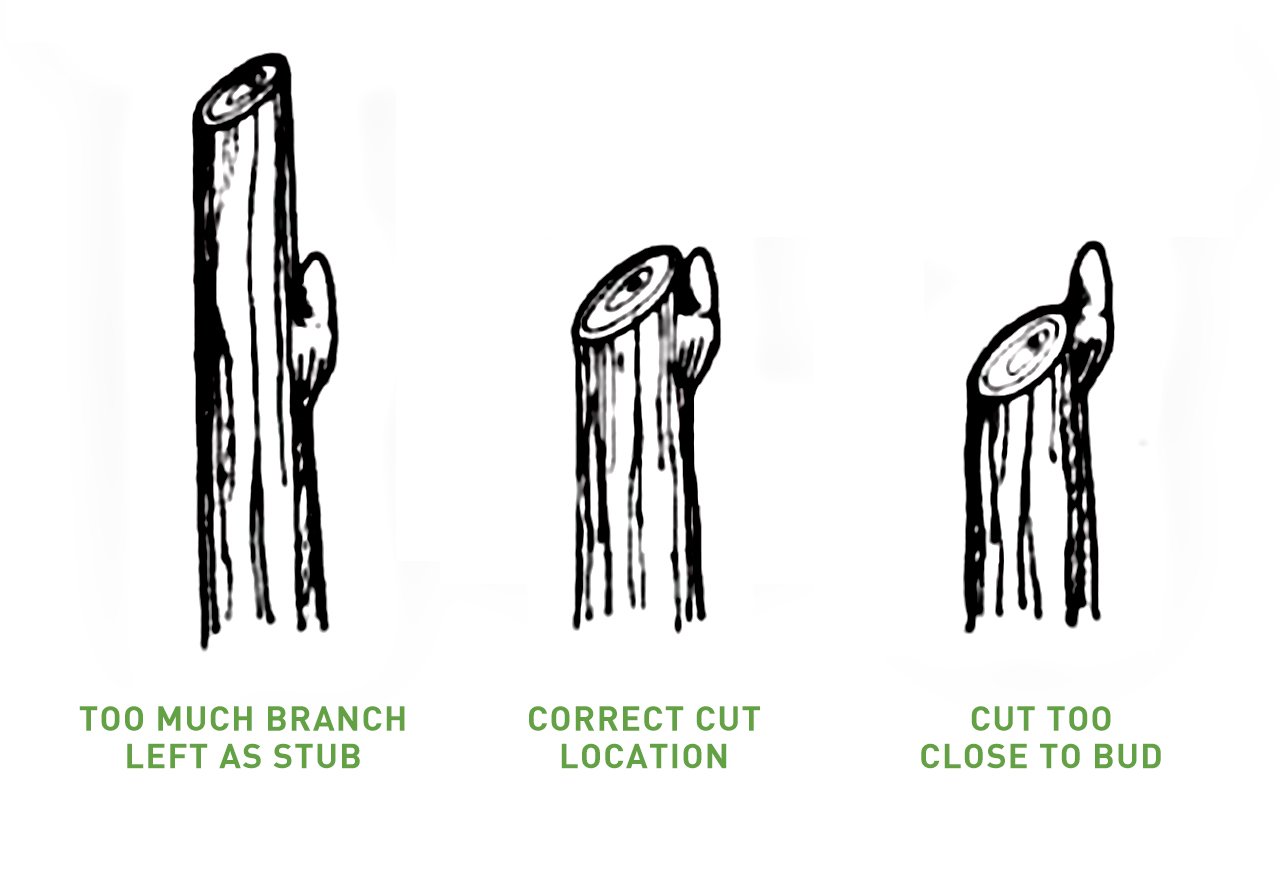
A Land Care Practice that Enhances the Health and Vigor of Trees & Shrubs
Pruning correctly is a landscape practice that can enhance the health, vigor and aesthetics of your Trees and Shrubs. We recommend Pruning in the Winter for the following reasons.
Although Winter and early Spring is a great time to Prune, if the Tree or Shrub is a Spring flowering plant, and the blooms are important to you, it may be best to postpone Pruning until after it is done blooming. Even though the health of Spring blooming plants will never be adversely affected by Winter Pruning, it can reduce the blooms.
There are many reasons to Prune woody plants and it is a good idea to understand why you are Pruning before you start. Before making the first cut, understand why you are removing the branch. It's very helpful to have a vision and goal in mind for how you want the Tree or Shrub to look when you are done.
The most common reason that homeowners Prune their plants is to reduce or maintain a plants size. Other reasons to Prune include removing dead, diseased, or damaged branches, increasing flowers or fruits, stimulating growth, and removing branches that may be interfering with or obstructing pedestrians, traffic, and buildings.
There are two basic techniques that are used when pruning most woody plants, Thinning and Heading Back. Both of these techniques should be practiced together when the objective is to reduce or maintain the size of the plant. With both of these techniques, using sharp, high-quality, and well-maintained Pruning equipment will make the job much easier and less likely to cause damage to your plants
THINNING
This is the removal of an entire branch back to the next branch or the main trunk. This technique promotes better health and form by removing weak and diseased branches and increasing light penetration and air movement. When making a Thinning cut, do not cut so close to the trunk or next branch that you cut into the area at the base of the branch that you are removing. This area is called the branch collar. By cutting into or removing the branch collar, you will slow down the healing process and possibly increase the risk of infection. If you did it properly, you will see a circle of healthy callus material swell around the cut in the spring.

HEADING BACK CUT
This is simply shortening the length of the branch back to a bud or to the next side branch. A proper Heading Back Cut should never leave a stub. Stubs that are left from pruning usually rot and later invite insects and disease to move in and attack healthy plant matter. Make your Pruning cut at a slight angle above the bud or side branch.

Thoughtful Pruning of your Trees and Shrubs during the dormant Winter season will allow you more time to enjoy the fruits and blooms of your labors during the pleasant weather of Spring!
Contact us with any questions or to learn more about our Organic Land Care Services.